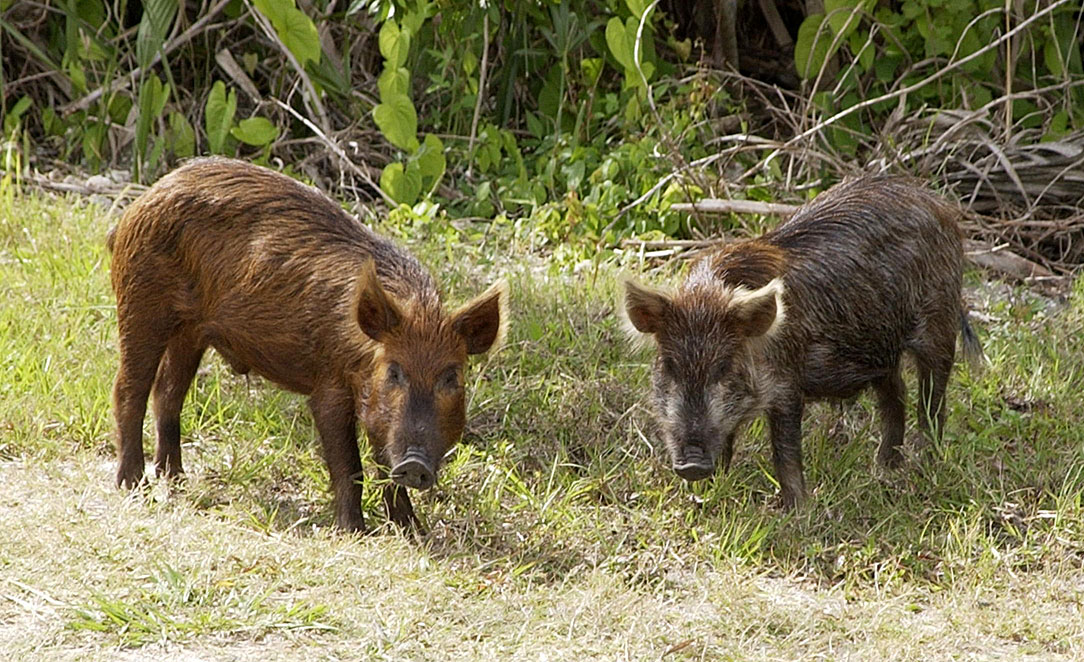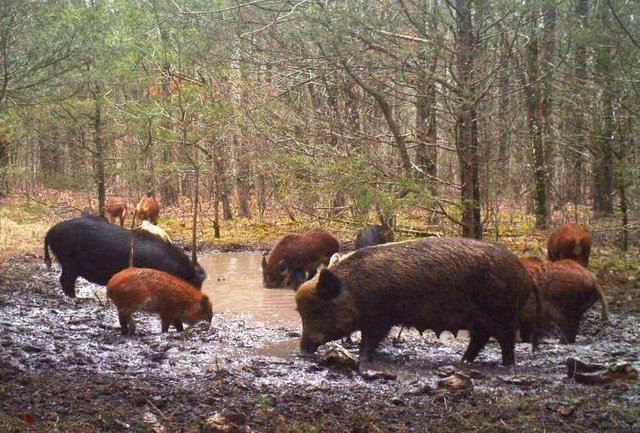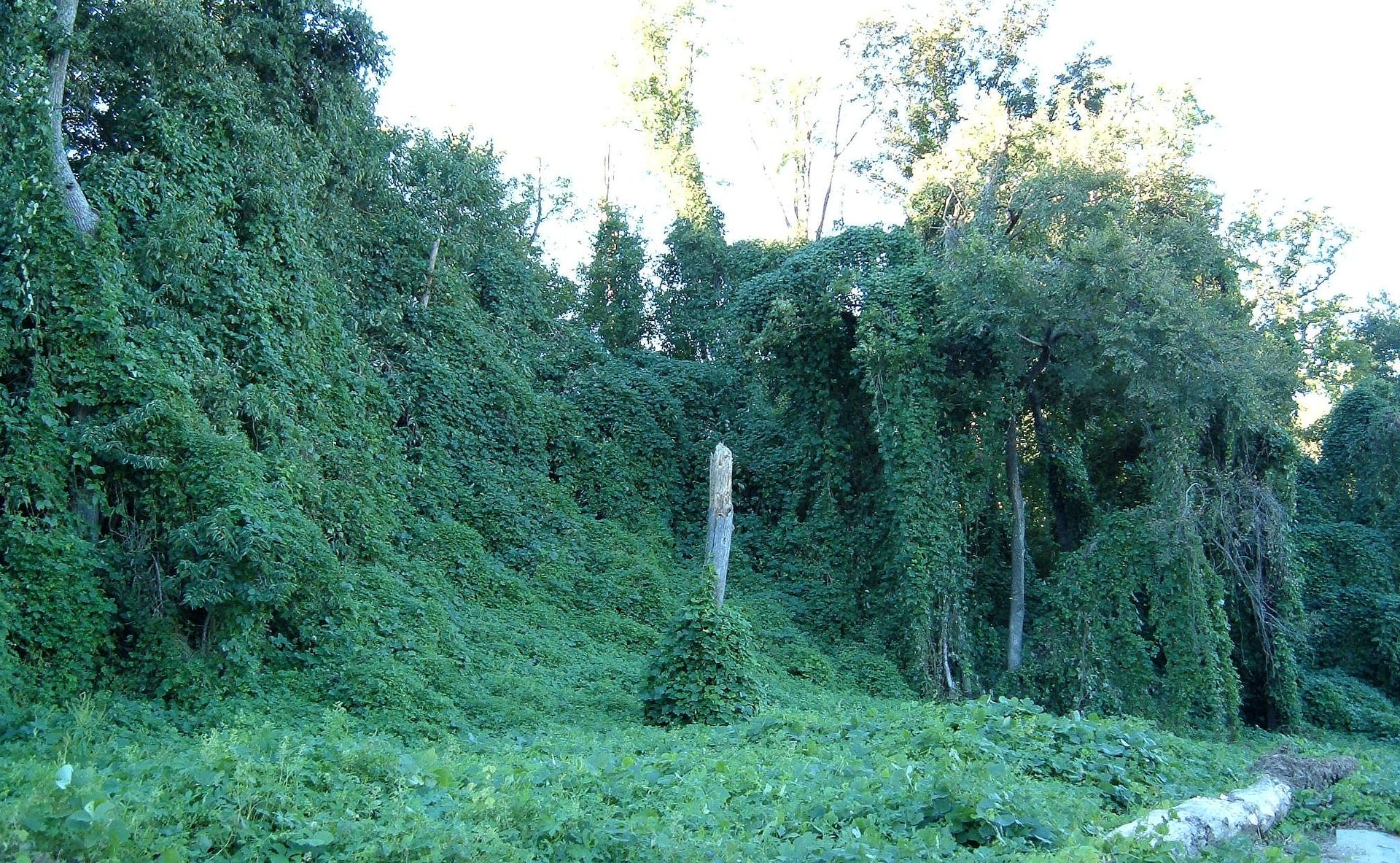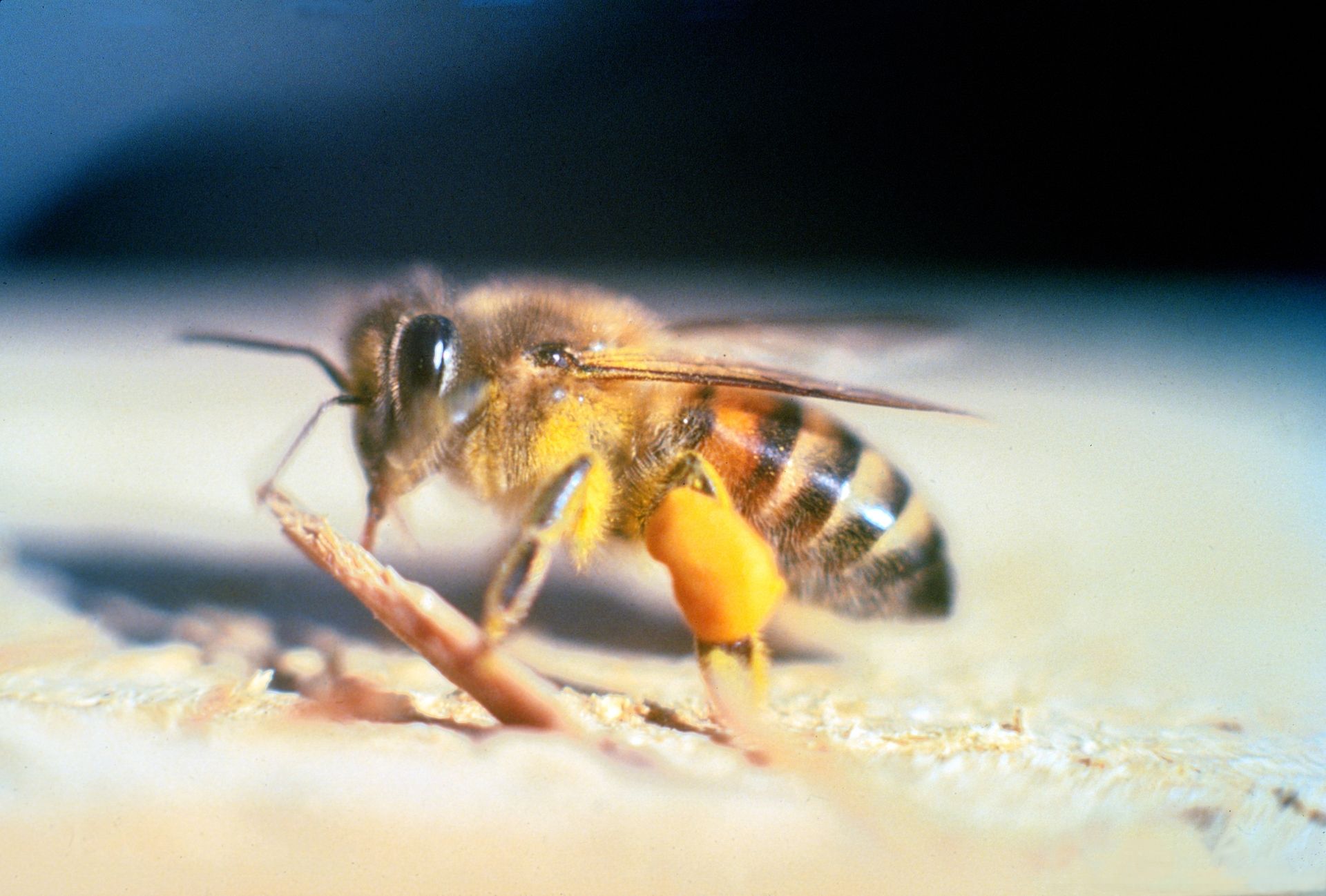Geology of the Oldest Mountains in the World: Vol. 3 – Ecological Impact of Invasive Species in the Appalachians
In the last two posts regarding the geology of the Appalachians, I focused primarily on the geological consequences this region has endured for the better part of a half a billion years. In this post, I will be changing the tune a bit and focusing on the ecology of invasive species and its effects on the topography and environment as a whole. While there is an exuberant amount of invasive species to choose from, I decided to focus on two examples that have a massive impact on this region. Today, I’ll be discussing the ecological effects of feral swine (wild hog) and the vine kudzu (Japanese arrowroot) residing in the southern Appalachian Mountains.
Feral Swine (Wild Hog):
 This image displays feral swine, which are also known as "wild hog." [Image Source]
This image displays feral swine, which are also known as "wild hog." [Image Source]
Many people are led to believe that the wild hog of America is a native species to the continent. However, quite the opposite is true. The feral swine of the Appalachians pose one of the biggest risks to not only the environment of this region, but to humans as well. Introduced to this region in the early 1900’s from Europe, the wild hog has done well for itself— too well.
The ecological and geological ramifications feral swine have on this region are widespread. To the point where there is almost too many examples to mention. This impact is almost entirely a causality of their diet , which consists of grasses, forbs, roots and tubers, browse, mast (acorns), fruits, bulbs and mushrooms. Due to them rooting for food and their wallowing activities, wild boar aid in the spreading of invasive plant species (e.g. kudzu), while also accelerating the rate of erosion near streams, mountainsides and valleys. Their feeding habits also endanger many plant species native to this region, while also contributing deforestation by shifting the tree species diversity and the overall density of the forest. Furthermore, the consumption of mast (fruit of forest trees like acorns and nuts), depletes food sources for native wildlife such as turkey, bear and deer.

But wait, there’s more! Large groups of feral swine can deposit significant quantities of fecal matter, contaminating water sources increasing the risk of diseases—e.g. Swine brucellosis, pseudorabies and hog cholera, etc— being spread to wildlife, livestock and even humans. The most devastating of these diseases is pseudorabies, which is also known as “the mad itch.” One would presume this was a variation of your common rabies, but it is actually a highly contagious form of herpes, more akin to the chicken pox many of us experience as children. While this isn’t a huge issue for humans, for wild canines such as coyotes, wolves and foxes, this disease can prove to be fatal.
As you can see, feral swine a huge issue not only to humans but to the wildlife of this region as well. What’s even more disturbing, is that I’ve only scraped the surface of the environmental threats these animals pose. Here are some downright jaw dropping facts:
- Due to their swallowing activities near streams, feral hog can cause massive fish kills.
- Feral swine are a problem across the entirety of the United States, causing $1.5 billion each year in control and damage costs.
- Cause extraneous damage to farmland such as row crops.
- Damage residential property, beaches, golf courses, cemeteries and parks.
- Due to the overpopulation of feral swine, they are allowed to be hunted year round.
Kudzu (Japanese Arrowroot):
 This image will help give you a better idea of how invasive kudzu truly is. It literally covers every bit of foliage in sight, destroying whole habitats. [Image Source]
This image will help give you a better idea of how invasive kudzu truly is. It literally covers every bit of foliage in sight, destroying whole habitats. [Image Source]
What would appear to be your typical vine, kudzu is anything but. Native to much of eastern and Southeast Asia, when naturalized in a foreign land, this noxious weed becomes a threat to the environment in which in thrives. It was initially introduced to America from Japan in 1876 at the Philadelphia Continental Exposition as a decorative bush. In the 1930’s it was rebranded as a way to stop soil erosion on farmland and as a food source for grazing cattle. While the vine certainly helped lessen denudation of farmlands and fed cattle, it was eventually introduced to the wilderness where it began to show its invasive qualities. It should be noted that while living in western North Carolina, local inhabitants mentioned that kudzu was introduced to this region to the stop erosion of mountainsides (e.g. landslides) due to mass deforestation and land removal; specifically the removal of bedrock in order to build highways.
Another image of kudzu displaying its prowess over a foreign environment. [Image Source]
Growing at a rate of up to 1 foot per day, it became clear that the introduction of kudzu was a terrible mistake. Due to the longer summers and shorter winters of this region, it was able to flourish in the mountains. As a result, it began to envelope all forestry in its path, suffocating many native plant species of sunlight. To make matters worse, due to deforestation and the planet being foreign, it had no natural competitors, allowing the vine to grow at an accelerated rate. Removal of kudzu has been attempted, but it requires the use of toxic herbicides which only further the negative impact it has on the environment. However, farmers still use the vine as a source of food for their livestock in this region, which keeps many of the valleys clear, but the mountainsides are still inundated by it. Since the eradication of this plant is highly unlikely, some scientists have looked into using the plant as a viable source for biofuel.
Conclusion:
The main reason I decided to write about the impact of invasive species in the southern Appalachians is because it’s a problem that seriously threatens the national parks and forests we know and love. There are numerous examples of other invasive species throughout the United States and world that can be entirely blamed on human interaction with the environment.
Sure, some introductions of invasive species can be boiled down to a complete lack of knowledge, but that isn’t always the case. There are plenty of instances where scientists have been the cause of certain species being released into a foreign environment to solve an ecological or economical issue. E.g. the killer bees which were engineered in the 1950's in a lab in Brazil to create a bee that produced more honey— the exact opposite occurred.
 This is the Africanized Bee, which is also known as the "killer bee." These were developed in a lab in Brazil and are a cross breed of African and European honeybees. It is a very invasive and deadly species. [Image Source]
This is the Africanized Bee, which is also known as the "killer bee." These were developed in a lab in Brazil and are a cross breed of African and European honeybees. It is a very invasive and deadly species. [Image Source]
What I find even more bizarre is that we continue to use similar practices in agricultural, technological (A.I.) and many other industries. At some point, as a planetary society, we’re going to have to take a step back and look at the bigger picture. I believe the example of kudzu aligns best with the point I’m trying to convey— at first it may have seemed like a great idea, but it grew out of our control in a geological nanosecond.
Volumes:
Bibliography:
https://www.smithsonianmag.com/science-nature/a-plague-of-pigs-in-texas-73769069/
https://www.nps.gov/grsm/learn/nature/dff309-meet.htm
https://www.aphis.usda.gov/aphis/ourfocus/wildlifedamage/operational-activities/feral-swine
https://en.wikipedia.org/wiki/Kudzu
https://en.wikipedia.org/wiki/Feral_pig
https://www.ars.usda.gov/news-events/news/research-news/2016/a-faster-way-to-get-rid-of-kudzu/
https://www.invasivespeciesinfo.gov/plants/kudzu.shtml
Knowledge acquired through years of living in this region
If you enjoyed reading this post, be sure to give me a follow and check out the rest of my blog. Overall, my blog consists of scientific topics dealing with geology, meteorology, geography, food and history. The goal of this blog isn’t to earn money per se. While that is a nice benefit, I’m more interested in networking, learning, informing and helping the Steemit community grow to new heights. Thanks for all your support!


To read more about us and what we do, click here.
https://steemit.com/geopolis/@geopolis/geopolis-the-community-for-global-sciences-update-4
If you do not want us to upvote and comment on your posts concerning earth and earth sciences, please reply stop to this comment and we will no longer bother you with our love ❤️
Fantastic piece @keephy, this is the epitome of a good blog post. It is very well-written and highly informative.
Hey there! Thank you for the words of encouragement! I really appreciate it because I'm new to blogging but love writing. Honestly, Steemit is pretty much a dream come true, lol.